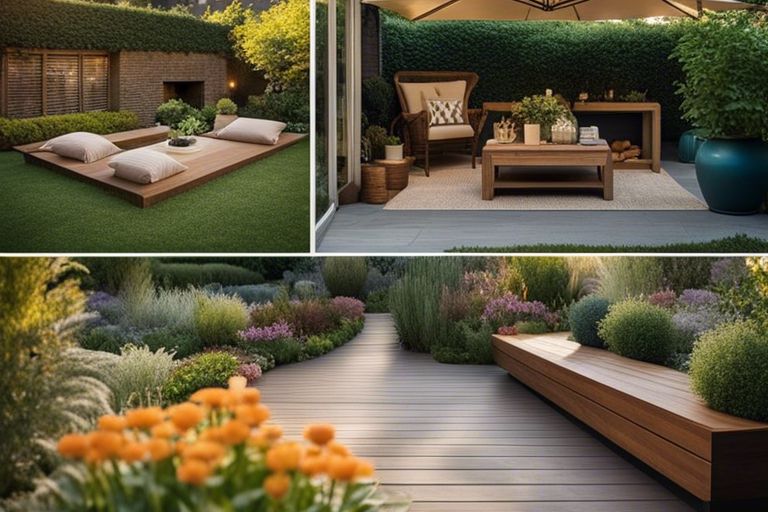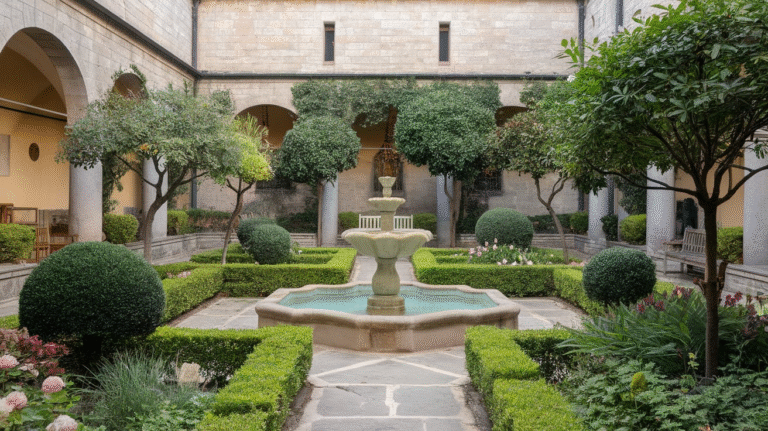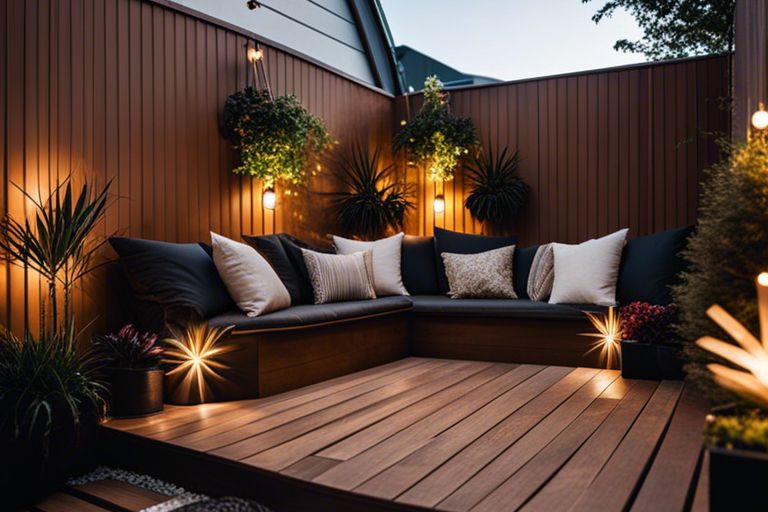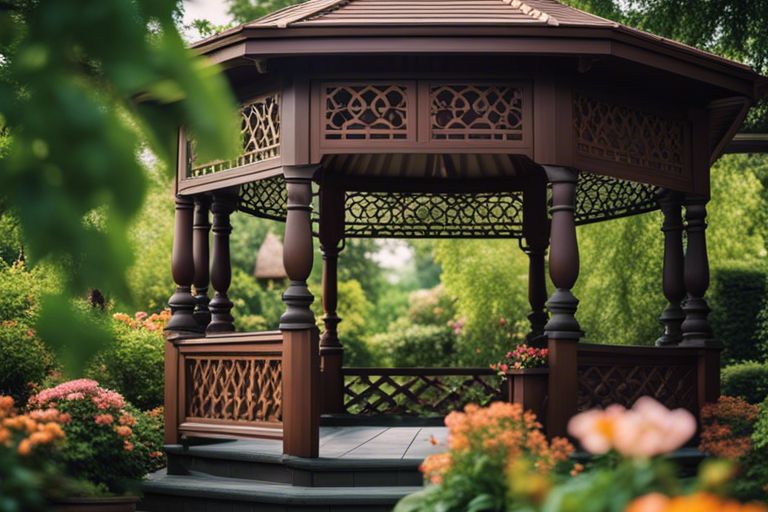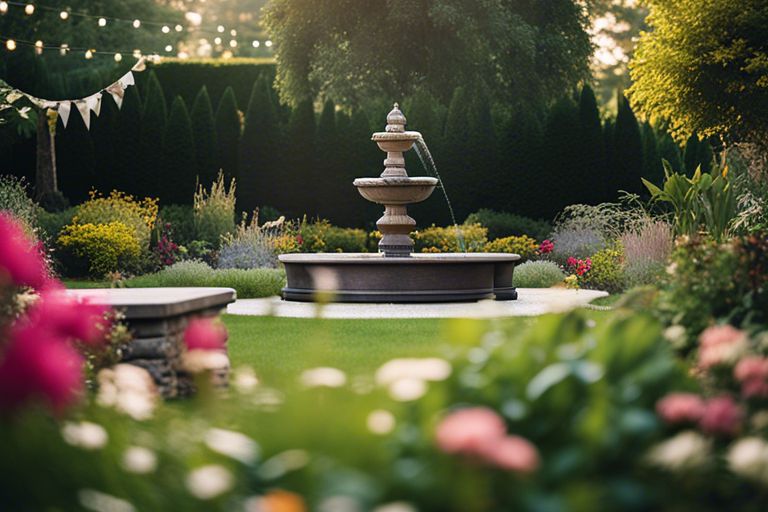19 Tiny Garden Ideas That Make the Most of Small Spaces

Space may be limited, but your gardening dreams don’t have to be.
I’ve seen balconies turn into jungles, alleyways blossom into edible havens, and front porches rival full-fledged garden centers.
If you’ve got a patch of dirt, a pot, a ledge—or even just a sunny corner—these tiny garden ideas will show you how to grow beauty, joy, and maybe even dinner, without needing a backyard.
1. Vertical Gardening: Grow Up, Not Out
When space is tight, the only direction to grow is up. I once transformed a 3-foot-wide balcony into a lush vertical paradise using wall planters, hanging baskets, and a trellis wrapped with morning glories.
Wall-mounted shelves, ladder planters, and hanging pouches are lifesavers in tiny gardens. Herbs like basil, parsley, and thyme thrive in small wall containers, while trailing plants like pothos or ivy create a cascade of green.
2. Container Gardening: Pots That Pack a Punch
Containers are your best friend. You can move them, switch them, rearrange them—and when the weather turns, even bring them inside. I’ve grown tomatoes, peppers, lavender, strawberries, and even lemongrass in containers on my old apartment’s fire escape.
Opt for lightweight resin or fabric pots if you’ll be shifting them often. Deep-rooted plants like carrots need at least 12 inches of soil, while shallow herbs do fine with 6.
3. Balcony Oasis: A Room with a Bloom
Even the smallest balconies can bloom into something spectacular. A friend of mine in a high-rise condo lined their balcony railing with rectangular planter boxes, each filled with petunias, mint, and dwarf kale.
Folding chairs, a tiny café table, and string lights added the finishing touches. It became their favorite spot for morning coffee and evening wine.
4. Hanging Gardens: Take to the Sky
Hanging baskets aren’t just for old English cottages. They’re a smart vertical solution that adds charm and functionality.
Use them for trailing flowers, succulents, or even cherry tomatoes. For a dynamic look, layer them at different heights. And don’t underestimate the upside-down tomato planter—odd-looking, yes, but surprisingly effective.
5. Window Boxes: Framed Green Views
A classic for a reason. Window boxes instantly boost curb appeal and let you grow plants even if your garden space is literally a windowsill.
Plant a mix of colors and textures—say, bright pansies, soft dusty miller, and trailing vinca—for that “professionally landscaped” look. For edible impact, mix in arugula, chives, or oregano.
Stat to note: A survey by HomeAdvisor found that enhancing curb appeal with plants, including window boxes, can boost home value by up to 7%.
6. Herb Spiral: Small Footprint, Big Flavor
This is one of those tiny garden tricks that feels like cheating. Build a small spiral out of bricks or stones, filling it with soil as you go. The design creates microclimates: sunnier at the top, shadier at the bottom.
I once planted basil, rosemary, parsley, cilantro, thyme, and mint in just one spiral—each thriving in its preferred condition.
7. Pallet Gardens: Rustic and Reclaimed
A wooden pallet leaned against a wall can become a mini Eden. Just staple landscaping fabric across the back and bottom of each row, fill it with soil, and plant your greenery.
This was my go-to solution during college when I had zero budget but lots of ambition. I grew lettuces, strawberries, and succulents in a $5 pallet from a warehouse.
8. Tiered Planters: Garden Steps
Tiered planters make the most of vertical and horizontal space. Think of it like stadium seating for your plants—everyone gets sun!
You can buy them or DIY using stacked crates, shelves, or even old drawers.
They’re ideal for succulents, herbs, and compact vegetables like radishes or baby bok choy. Rotate pots regularly so each gets its share of sunlight.
9. Indoor Jungle: Don’t Forget Inside
Sometimes the best tiny garden is indoors. South-facing windows are a golden ticket. I keep snake plants, fiddle leaf figs, monstera, and pothos thriving in my sunny living room.
Grow lights are a game-changer if your natural light is lacking. And don’t forget the bathroom—humidity-loving plants like ferns and peace lilies love it there.
Use plant stands and hanging shelves to layer in height and keep your floor uncluttered.
10. Fairy Gardens: Whimsy in Miniature
Tiny gardens for tiny imaginations. A fairy garden combines plants, miniature furniture, tiny houses, and figurines. Great for kids—or adults like me who just need a dash of fantasy.
Use a shallow bowl, fill it with moss, pebbles, small succulents, and get creative. There’s something magical about seeing a miniature swing hanging from a bonsai tree.
11. Edible Garden Wall: Snack on the Spot
Why walk to the kitchen when your wall feeds you? An edible vertical garden can include lettuce, cherry tomatoes, strawberries, and herbs.
Install modular wall planters or use a multi-pocket shoe organizer filled with soil and seeds. It’s budget-friendly, space-smart, and surprisingly productive.
I once had a 3-foot-wide edible wall that supplied all my greens for a summer. It felt like living in a salad commercial.
12. Micro Greenhouse: Big Results in Small Scale
You don’t need a full greenhouse. A small cold frame, clear storage box, or even a converted cabinet with glass doors can work wonders.
Seedlings, delicate herbs, and heat-loving plants like basil thrive in these warm micro-environments. It extends your growing season and protects from frost or pests.
13. Raised Bed on Legs: Elevated Gardening
If bending down is a hassle—or pests are an issue—raised beds on legs are the answer. They’re especially good for seniors or folks with mobility concerns.
Use them for leafy greens, bush beans, or strawberries. Make sure drainage is solid and the legs are sturdy.
I built one out of reclaimed wood and an old table frame—cheap, charming, and efficient.
14. Pocket Planters: Wall Art with Roots
Pocket planters are like green wallpaper. Hang them on a sunny wall and plant succulents, herbs, or flowers in each pocket. Fabric, felt, or canvas varieties retain moisture without overwatering.
It’s a favorite trick of urban dwellers. You get a living painting without taking up floor space.
Choose a colorful array of plants to create a real visual pop—think coral-colored begonias, chartreuse coleus, and soft lamb’s ear.
15. Tiny Pond: A Water Feature for Zen
Even in the smallest gardens, water soothes the soul. I once created a “pond” in a ceramic bowl using aquatic plants, pebbles, and a solar fountain.
Mini ponds attract birds, bees, and butterflies. Add water lettuce, miniature lilies, or even a couple of snails for natural maintenance.
16. Garden Cart: Rolling Greenery
A garden on wheels? Yes, please. An old bar cart, utility cart, or tiered serving tray becomes a mobile paradise.
Grow herbs on one level, flowers on another, and tools below. You can roll it in and out of sun, protect it from rain, or bring it indoors in winter.
Perfect for renters or commitment-phobes who like to rearrange often.
17. Stacked Crates: Rustic Garden Storage
Wooden crates, stacked like Jenga blocks, offer both planting space and storage. Use the tops for pots, the interiors for tools, gloves, or seed packets.
A friend of mine built a 6-crate garden tower that held more than 20 plants—and didn’t spend more than $30 total.
Add wheels if you want mobility or secure the stack with zip ties for safety.
18. Recycled Treasures: Junk Turned Garden Gold
Old teacups, colanders, boots, or even a rusted wheelbarrow can become charming planters. I once turned an old toolbox into a succulent planter—it sits proudly on my windowsill today.
This is where creativity meets sustainability. Just make sure to add drainage holes, or your plant’s roots will drown in charm.
19. Mirror Magic: Illusion of Space
One of the oldest design tricks works in gardens too. Hang a mirror behind your plants to reflect light and double the visual space.
It’s especially powerful in courtyards, balconies, or shady areas. Frame the mirror with ivy or climbing plants for a secret-garden feel.
Just be cautious with placement—avoid areas where the sun might reflect too harshly and scorch leaves.
Conclusion
Tiny gardens are proof that you don’t need acres to grow something meaningful. Whether it’s a wall of herbs or a single tomato plant in a pot, each green space is a win against the concrete jungle.
Remember: gardening is less about land and more about love, patience, and creativity. You don’t need to be an expert—just someone willing to dig a little and dream a lot.
So go on—pick one idea and start planting. Even the tiniest sprout can change the feel of a whole space. And who knows? You might just fall in love with your little jungle in the sky, on your sill, or tucked beside your front door.

